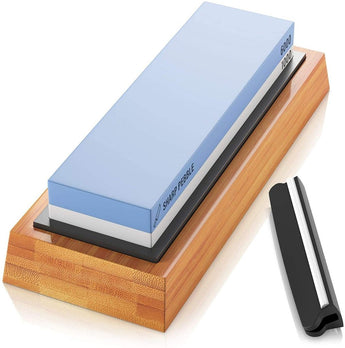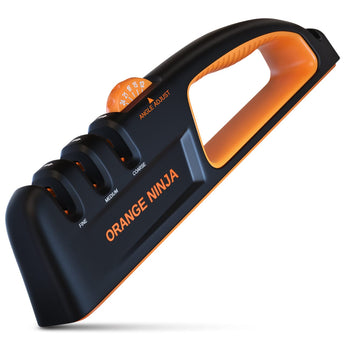
Obsessive perfection is synonymous with the Japanese way of life and sharpening a blade is no different. Japanese knives are renowned the world over for their durability and craftsmanship. So it makes perfect sense if we picked up a few nuggets of knife wisdom from a third-generation master Japanese knife sharpener, Mamoru Morimoto.
- A flat stone is critical to proper knife sharpening. Always check to see if the whetstone is perfectly flat all the way through. You can do that by placing a ruler over the stone’s surface and checking if any light passes through. Use a lapping tool to flatten the stone. Lapping/flattening plates made out of aluminum are a good choice for flattening your stones.
- Locating the correct angle. It is usually a bit tricky to locate the correct sharpening angle for a double beveled knife. You can do so by placing a couple of quarters on the sharpening stone’s surface.
- The pressure matters. If you don’t use adequate pressure while sharpening, you’d be just running the knife on the stone rather than actually sharpening it. Apply about 4-6 lbs. of pressure on a knife that’s relatively sharp and about 8 lbs. for a knife that needs more work. Press on the scale to get a feel for what the correct pressure feels like.
- Pay attention to the burr. The burr is the hair like particle-formation that forms along the edge while sharpening. It indicates whether the knife is being sharpened properly. You should strive to ensure burr uniformity along the edge i.e. it should be roughly the same size from the knife’s tip to the heel.
- Check if your knife is sharp. There are plenty of ways to check your blade’s sharpness. Slicing through paper is a very reliable way to do so. If the knife slices through paper effortlessly without any tugging that means your knife is in good working order.
Knife care after sharpening
Proper knife care goes beyond a few strokes over a whetstone. Here are a few important tips to maintain your knife once it’s sharpened.
- Keeping it rust free. Rust and corrosion can destroy even the most expensive blades. The best way to avoid it is to keep them dry. The easiest way to do it is by wiping them dry with a clean cloth once you’re done using them.
- Be careful when oiling. People often oil their knives before they store them. Avoid using oils that have salt because salt accelerates corrosion. Also, stay away from vegetable oil or animal fat because it can cause a foul smell. A few sprays of camellia oil should do the trick.
- Wooden handle care. If you use knives with a wooden handle, a handy tip to keep your knife handle moisture-free is to store your knives blade down. It will prevent moisture from seeping into the handle.
- A nifty storage tip. You may not know this but wrapping your knife in the newspaper will keep it rust free. The oil in newspaper ink is known to prevent the corrosion process. Do this when you’re about to put away your blades for a longer time period.
We’d love to hear from you! Drop us a PM on our Facebook or Instagram. For more useful tidbits on sharpening be sure to visit our blog.



